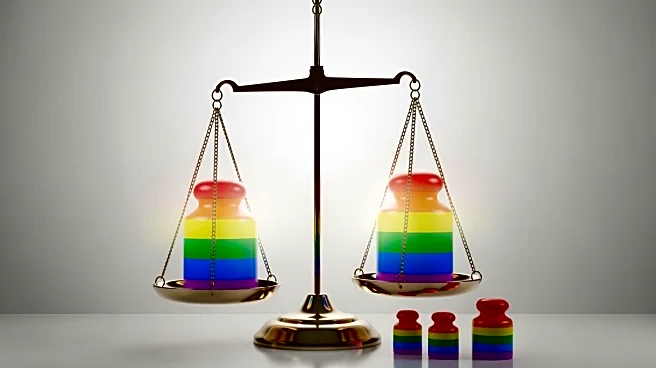What's Happening?
The Equal Employment Opportunity Commission (EEOC) has stated that it cannot be compelled by advocates to enforce LGBTQ+ antidiscrimination laws, as its enforcement of federal laws is a core executive function insulated from judicial review. This assertion
was made in response to a lawsuit filed by a Maryland legal services nonprofit, which accused the EEOC of failing to protect transgender workers from discrimination. The EEOC argued that allowing the case to proceed would violate the separation of powers and Title VII of the 1964 Civil Rights Act, turning the court into an overseer of the Commission's enforcement process. The agency also challenged the plaintiffs' standing to sue.
Why It's Important?
The EEOC's stance highlights the complexities of enforcing antidiscrimination laws and the limitations of judicial intervention in executive functions. This case underscores the ongoing challenges faced by LGBTQ+ advocates in ensuring protection against workplace discrimination. The EEOC's position may impact future legal strategies and advocacy efforts aimed at strengthening protections for transgender workers. The outcome of this legal challenge could influence the agency's approach to enforcement and its relationship with civil rights organizations. It also raises broader questions about the balance between executive authority and judicial oversight in enforcing civil rights laws.
What's Next?
The legal proceedings will continue as the court evaluates the arguments presented by both the EEOC and the plaintiffs. The case may set a precedent for how similar challenges to federal agency enforcement are handled in the future. Advocacy groups may need to explore alternative strategies to address perceived gaps in enforcement and protection for LGBTQ+ workers. The EEOC may face increased scrutiny and pressure to demonstrate its commitment to upholding antidiscrimination laws. The broader implications of this case could influence legislative efforts to strengthen protections for marginalized groups in the workplace.













